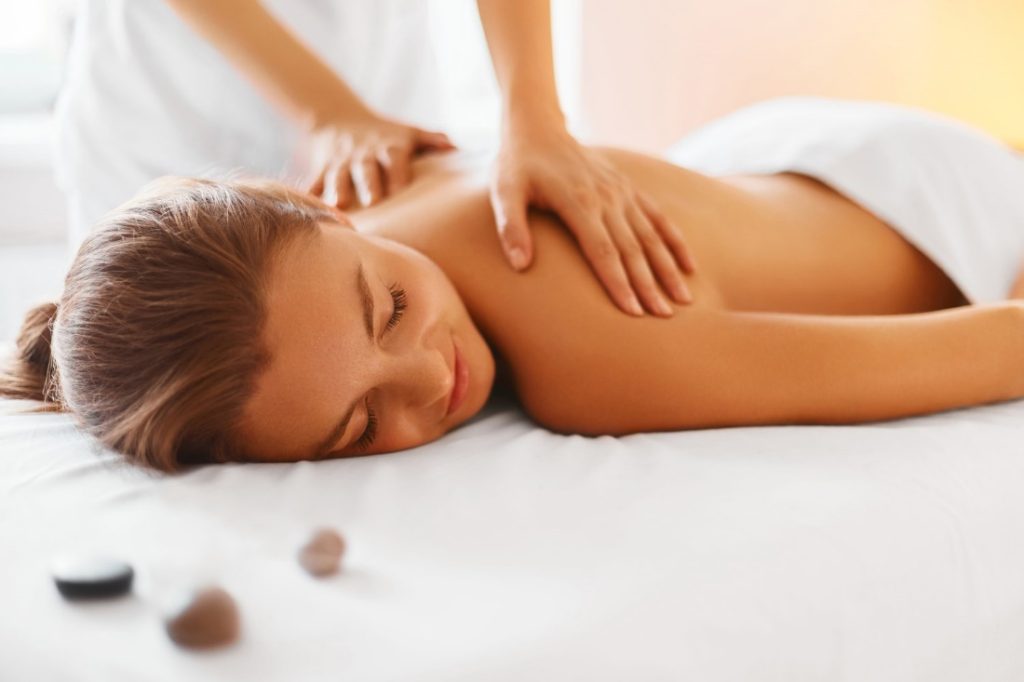Stress is a normal part of our life. It is our body’s way of handling harmful situations known as “fight or flight. When our body responds to stress, we experience an increase in heart rate and blood pressure and muscle tension. But when stress keeps firing every day, it can affect our body, thoughts, emotions, and behaviour. This can result in various health problems (e.g. heart problems, high blood pressure, obesity, and diabetes). Luckily, getting simple, yet soothing massage therapy in Ajax can provide relief from stress.
What Is Massage Therapy?
Massage therapy is a clinically-oriented healthcare option that involves the manipulation of the body’s soft tissues to relieve discomfort caused by everyday and occupational stresses, chronic pain, and muscular overuse. It uses hands-on techniques, such as application of fixed or movable pressure, and holding and moving body tissues and muscles. During a massage session, the therapist applies gentle or strong pressure to stroke the joints and muscles to alleviate tension and pain.
How Massage Benefits The Body
Whether you are a working professional, a student, or a parent, a long, soothing massage helps release all the built-up tension in your body. Supplementing your healthcare regimen with regular massage sessions does not only benefit you with a relaxing hour or two at the spa, but you also enjoy various health benefits that will carry through the days (or even weeks) after the appointment.
Take a minute to learn all the amazing benefits of massage therapy on your body:
- Reduce Stress – Getting a well-deserved massage at the end of a long, stressful day is a great way to relax, unwind and de-stress. The massage therapist gently yet expertly strokes your tired soft tissues to make you feel relaxed and invigorated.
- Improve Circulation – Massage loosens tight muscles and tendons, which improves blood circulation throughout the body. Increasing blood flow comes with a number of positive health effects, including pain and fatigue reduction.
- Relieve Chronic Pain – Individuals experiencing chronic stiffness and lower back pain can find relief from regular massage therapy. A professional therapist is trained to accurately target the source of pain to achieve relief.
- Eliminate Toxins – By expertly massaging the soft tissues, your body releases toxins through the blood and lymphatic system and flushes them out.
- Enhance Flexibility – Loosening and relaxing your muscles helps the body unleash its full range of mobility potential.
- Improve Sleep Quality – After getting a relaxing massage, you will be able to go to bed with loosened and relaxed muscles. Having a restful night sleep helps you feel energized in the morning.
- Boost Immunity – Massage therapy helps recharge your lymph nodes, which is the natural defense system of the body. This allows the body to fight off bacteria and viruses that make us sick.
- Reduce Fatigue – Regular massage not only helps improve mood and sleep quality, but it also allows you to face another day feeling energized and less worn-out.
Five Massage Techniques for Stress Relief
The soothing strokes of massage on your tired and aching muscles helps promote an ultra-relaxing experience that brings positive effects on your overall well-being. The good news is, there are various massage techniques designed to address and relieve stress.
Here are the top five massage techniques for stress relief:
- Deep Tissue Massage – This type of massage technique helps loosen tired, tight muscles and improve mobility. With every stroke, it digs deep into your muscles. While this may sound painful, a certified massage therapist knows how to target problem area without any discomfort.
- Swedish Massage – The Swedish massage uses different long, gliding strokes that induce relaxation while the therapist works on the knots in your muscles. In addition to relaxation, Swedish massage increases the oxygenation of your cells, improves blood flow, and eliminates toxins.
- Shiatsu Massage – The therapist uses his/her fingers (sometimes palm and elbow) to apply localized pressure in a rhythmic sequence along your body. Just like traditional Chinese medicine, shiatsu stimulates the body’s acupuncture points to boost and balance energy flow and promote healing and regeneration.
- Hot Stone Massage – The massage therapist places smooth, heated basalt stones (volcanic rocks) on specific points on your body while giving you a massage. The heat generated from the stone can give you a relaxing feeling while loosening knotted muscles so the therapist can quick release muscle tension. However, people with medical conditions, such as heart problems, hypertension, diabetes, or varicose veins, should consult their healthcare provider before getting a hot stone massage.
- Aromatherapy Massage – It incorporates a Swedish massage and uses scented essential oils to offer a pleasing and relaxing scent. Rose and lavender are commonly used in aromatherapy massage because they promote relaxation. Its soothing effects help treat headaches, digestive conditions, back pain, and premenstrual symptoms.

